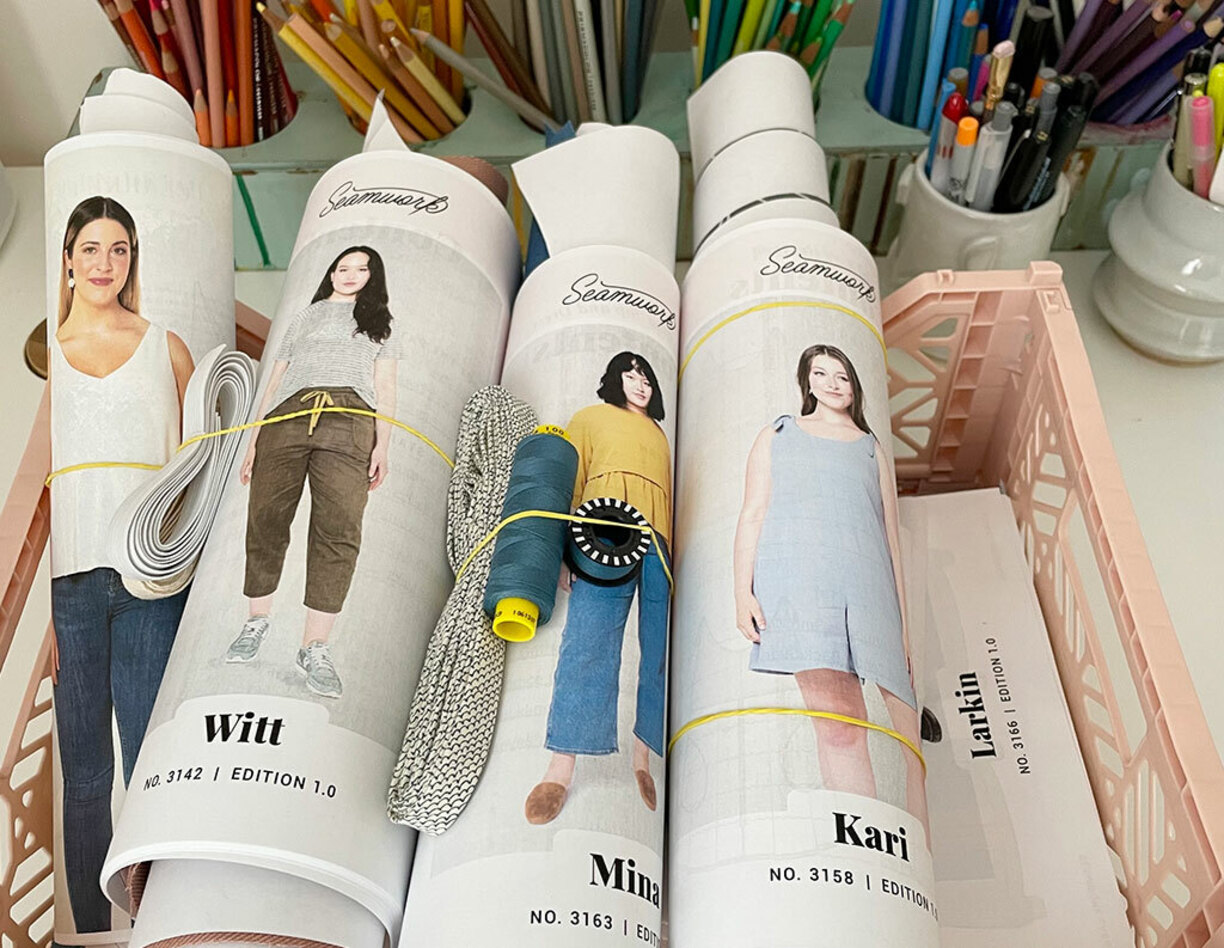

Articles
How To Store Sewing Patterns
Modified: August 28, 2024
Learn how to store your sewing patterns effectively with these helpful articles. Keep your patterns organized and easily accessible for your next sewing project.
(Many of the links in this article redirect to a specific reviewed product. Your purchase of these products through affiliate links helps to generate commission for Storables.com, at no extra cost. Learn more)
Introduction
When it comes to the world of sewing, having well-organized and properly stored sewing patterns is essential. Whether you are an experienced seamstress or just starting out, knowing how to store your sewing patterns can save you time, money, and frustration.
Proper storage not only keeps your sewing patterns in pristine condition but also allows for easy access when you need them. No more rifling through a pile of crumpled papers or searching for that one pattern that seems to have disappeared into the abyss.
In this article, we will explore the importance of proper storage for sewing patterns and provide you with valuable tips and techniques to help you keep your patterns well-maintained and easily accessible. Whether you have a small collection or a vast assortment, these tips will ensure that your sewing patterns stay in top shape, saving you time and effort in the long run.
Key Takeaways:
- Proper storage for sewing patterns is crucial for protecting their integrity, ensuring easy access, and extending their lifespan. Implementing effective organization and protection measures enhances the sewing experience.
- Specialty or vintage sewing patterns require extra care and attention to preserve their historical significance. Using acid-free materials, handling with care, and documenting their history are essential for their protection.
Read more: How To Use Projector For Sewing Patterns
Importance of Proper Storage for Sewing Patterns
Proper storage for sewing patterns is crucial for several reasons. First and foremost, it helps to protect the integrity of the patterns themselves. Sewing patterns are typically made of delicate paper, and if they are not stored properly, they can become torn, creased, or damaged by moisture or pests.
By storing your patterns correctly, you can ensure that they remain in excellent condition for future use. This means you won’t have to waste time deciphering torn or distorted lines on your pattern pieces or struggle to lay out patterns that have been crumpled or folded incorrectly.
Moreover, proper storage enables easy access to your sewing patterns. Imagine having a neatly organized collection where you can quickly find the pattern you need, without the frustration of searching through a messy pile or multiple boxes. This saves valuable time and energy, allowing you to focus on the creative process and enjoy your sewing projects.
In addition to preserving the integrity and accessibility of your sewing patterns, proper storage also helps to extend their lifespan. Many sewing enthusiasts collect patterns over the years, and it’s a shame when these treasured pieces become damaged or unusable due to improper storage.
By implementing good storage practices, you can ensure that your sewing patterns last for years to come. This is especially important if you have rare or vintage patterns that are no longer in circulation or easily replaceable. Caring for and storing these unique patterns properly can increase their value and preserve their historical significance.
Lastly, proper storage for sewing patterns is crucial for staying organized. Sewing patterns can quickly accumulate, making it important to have a system in place to keep track of what you have. When your patterns are well-organized, you can easily identify duplicates, track your inventory, and avoid purchasing duplicate patterns unintentionally.
Overall, the benefits of proper storage for sewing patterns are numerous. It protects the patterns, allows for easy access, extends their lifespan, and keeps you organized. In the next sections, we will discuss the common mistakes to avoid and provide you with helpful tips for storing your sewing patterns effectively.
Common Mistakes in Storing Sewing Patterns
While it’s essential to know how to properly store your sewing patterns, it’s equally important to be aware of common mistakes that can lead to damage or disorganization. Avoiding these mistakes will help you maintain the integrity of your patterns and ensure they remain in excellent condition for future use.
One of the most common mistakes in storing sewing patterns is folding them incorrectly. Folding patterns haphazardly or in an incorrect manner can lead to creases and distortions that affect the accuracy of the pattern pieces. Always follow the original folding lines indicated on the pattern envelope or instructions to preserve the integrity of the paper.
Inadequate protection is another mistake to avoid. Avoid storing your patterns in flimsy or unprotected containers, as they can be easily damaged by moisture, pests, or accidental spills. Instead, opt for sturdy storage solutions that offer protection, such as archival-quality plastic sleeves, acid-free envelopes, or dedicated pattern storage boxes.
Improper labeling is another common mistake that can lead to confusion and disorganization. Failing to label your patterns correctly can result in difficulty identifying the desired pattern among a collection. Make sure to clearly mark each pattern envelope with the pattern number, name, and any relevant notes, such as the size or modifications made.
Another mistake is neglecting to track your inventory. Keeping track of your patterns helps you avoid purchasing duplicate patterns or missing out on patterns you already own. Utilize a tracking system, whether it’s a spreadsheet, digital catalog, or dedicated pattern organization app, to keep an up-to-date record of your sewing patterns.
Ignoring the importance of proper climate control is a mistake that can lead to damage, particularly for vintage or specialty patterns. Extreme temperatures, humidity, and sunlight can deteriorate the quality of the paper and fade the printing on the envelopes. Store your patterns in a cool, dry, and dark environment to protect them from these damaging elements.
Lastly, neglecting to sort and organize your patterns can lead to frustration and wasted time. Avoid dumping all your patterns into a single box or drawer without any organization. Instead, consider categorizing them by garment type, size, or designer. This way, you can quickly locate the pattern you need and maintain a tidy and efficient sewing space.
Avoiding these common mistakes in storing sewing patterns will help you maintain the integrity of your patterns, stay organized, and preserve their longevity. In the next sections, we will provide you with practical tips for storing your sewing patterns effectively.
Tips for Storing Sewing Patterns
Properly storing your sewing patterns is essential for keeping them in good condition and easily accessible. By following these tips, you can ensure that your patterns remain organized and protected for years to come:
- Invest in Archival-Quality Storage: Opt for storage solutions made from acid-free and lignin-free materials to prevent yellowing, deterioration, and discoloration of your patterns over time. Acid-free storage boxes, plastic sleeves, or envelopes are excellent options for long-term preservation.
- Choose a Cool and Dry Storage Space: Store your patterns in a climate-controlled area away from direct sunlight, humidity, and extreme temperature fluctuations. A dry and cool space, such as a closet or dedicated pattern cabinet, will help protect them from moisture damage.
- Use Clear Plastic Sleeves: Slip each pattern envelope into a clear plastic sleeve or envelope to provide an extra layer of protection against dust, moisture, and accidental spills. This will also make it easier to see the details of the pattern without removing it from the sleeve.
- Organize by Category: Categorize your patterns by garment type, size, or designer to facilitate easy browsing and retrieval. This can be done using file folders, dividers, or separate sections within a storage box or cabinet.
- Create an Index or Catalog: Keep a master list or catalog of your patterns, either in a physical notebook or a digital document. Include details such as pattern number, name, size, and any modifications made. This will help you quickly locate specific patterns and avoid duplicates.
- Consider Using Hanging File Folders: If you have a large collection of patterns, hanging file folders can be an effective storage option. Place each pattern envelope in a file folder and hang them in a file cabinet or dedicated pattern storage box. This allows for easy browsing and prevents excessive folding or wrinkling.
- Label Clearly: Ensure that each pattern envelope is clearly labeled with the pattern number, name, and any pertinent information such as size or modifications made. This will help you quickly identify the desired pattern without searching through multiple envelopes.
- Keep Pattern Pieces Organized: To prevent pattern pieces from getting lost, consider using small plastic bags or envelopes to store them within the pattern envelope. Label each bag or envelope with the corresponding pattern name and number for easy reference.
- Periodically Review and Update: Regularly assess your pattern collection to remove any patterns you no longer use or need. This will help keep your storage space clutter-free and make it easier to find the patterns you love.
By implementing these tips, you can maintain an organized and well-preserved collection of sewing patterns. Not only will this save you time and frustration, but it will also protect your investment and enhance your sewing experience.
Choosing the Right Storage Solution
When it comes to storing your sewing patterns, choosing the right storage solution is a crucial step in ensuring their preservation and easy accessibility. Here are some factors to consider when selecting the best storage option for your needs:
- Size and Capacity: Assess the size of your pattern collection to determine the storage capacity you require. Whether you have a small collection or a large one, make sure your chosen storage solution can comfortably accommodate your patterns without excessive folding or cramming.
- Protection: Look for storage solutions that provide adequate protection against dust, moisture, pests, and sunlight. Opt for acid-free and lignin-free materials, such as archival-quality plastic sleeves, envelopes, or boxes. These materials will prevent yellowing, deterioration, and discoloration of your patterns over time.
- Accessibility: Consider how easily you need to access your patterns. If you frequently reference or use specific patterns, opt for storage options that allow for quick and convenient retrieval. Hanging file folders, dedicated pattern storage boxes with dividers, or open shelving systems can provide easy access to your patterns.
- Flexibility: Choose a storage solution that can adapt to the size and shape of your patterns. Adjustable compartments, expandable folders, or modular storage systems can provide the flexibility needed to accommodate patterns of varying sizes and formats.
- Visibility: It’s important to be able to see and identify your patterns without having to remove them from storage. Transparent plastic sleeves, clear envelopes, or storage solutions with labels and windows can help you easily locate the desired patterns at a glance.
- Portability: If you frequently travel with your sewing patterns or attend sewing classes or workshops, consider a portable storage solution. A tote bag or portable file box with handles can keep your patterns organized and protected on the go.
- Available Space: Evaluate the available space in your sewing area or storage room before choosing a storage solution. Ensure that the chosen storage option fits comfortably and does not overcrowd your space. Free-standing shelving units, filing cabinets, or custom-built storage systems can maximize space utilization.
- Aesthetics: If aesthetics are important to you, select a storage solution that complements your sewing area or fits your personal style. Some options come in a range of colors, designs, or materials, allowing you to find one that suits your preferences.
- Budget: Consider your budget when selecting a storage solution. There are options available to suit various price points, from simple and affordable plastic storage boxes to more elaborate and pricier custom-built storage systems. Choose a solution that meets your needs without breaking the bank.
By considering these factors, you can select the storage solution that best suits your specific requirements and preferences. Remember, finding the right storage solution will not only protect your sewing patterns but also enhance your overall sewing experience.
Store sewing patterns in clear plastic sleeves or envelopes to keep them organized and protected. Label each sleeve with the pattern number and store them in a binder or filing system for easy access.
Read more: How To Store A Sewing Machine
Organizing Sewing Patterns in a Storage System
Once you have chosen the right storage solution for your sewing patterns, the next step is to organize them effectively within that system. Proper organization ensures that your patterns are easily accessible, well-protected, and allows for efficient browsing and retrieval. Here are some tips to help you organize your sewing patterns:
- Categorize by Type: Start by categorizing your patterns by garment type, such as dresses, tops, skirts, or accessories. This allows you to quickly locate the specific type of pattern you need when starting a new sewing project.
- Sort by Size: Within each garment type category, further sort your patterns by size. This is particularly useful if you have multiple sizes of the same pattern or prefer to work with specific size ranges.
- Utilize Dividers or File Folders: Use dividers or file folders to separate different categories or sizes of patterns within your storage system. This can be done with hanging file folders, separate sections within a storage box or cabinet, or designated compartments in a storage organizer.
- Arrange in Alphabetic or Numeric Order: If you have a large collection of patterns, consider arranging them either alphabetically by pattern name or numerically by pattern number. This organization method makes it easier to locate specific patterns without extensive searching.
- Create a Reference Index: Keep a separate index or catalog of your patterns to quickly locate desired patterns. Include detailed information like the pattern number, name, size, modifications made, and the specific category it belongs to. This reference index can be in the form of a physical notebook or a digital document.
- Label Clearly: Label each pattern envelope or storage container clearly with the pattern number, name, and any other relevant information. This will allow you to identify patterns quickly, even when they are stored out of order.
- Consider Display Options: If you have a small collection of patterns that you want to showcase or keep visible, consider using a pattern display rack or stands. This allows you to easily flip through your patterns and adds a decorative touch to your sewing area.
- Store Pattern Pieces Securely: To avoid losing or misplacing pattern pieces, keep them organized within the pattern envelope. Use small plastic bags or envelopes labeled with the pattern name and number to store the pieces separately. This ensures that all the components of the pattern are together when you need them.
- Maintain Regular Maintenance: Periodically review your pattern collection to remove any patterns you no longer need or use. This prevents your storage system from becoming cluttered, allowing for easy browsing and ensuring that you have space for new additions.
By organizing your sewing patterns in a thoughtful and systematic manner, you can effortlessly find the patterns you need, maintain the condition of your collection, and make the most of your sewing time and creativity.
Labeling and Tracking Systems for Sewing Patterns
When you have a sizeable collection of sewing patterns, keeping track of them becomes crucial for easy retrieval and organization. Labeling and tracking systems help you quickly identify specific patterns and ensure you don’t accidentally purchase duplicates. Here are some effective methods for labeling and tracking your sewing patterns:
- Pattern Number and Name: Label each pattern envelope with the pattern number and name. This basic labeling allows you to quickly identify the pattern you’re looking for, especially if you have a large collection.
- Pattern Modifications: If you have made any modifications or alterations to a pattern, make a note on the envelope. This information will save time during future projects and help you remember what modifications you have already made.
- Pattern Size: Indicate the size or sizes included in the pattern on the envelope. This is particularly useful if you own multiple sizes of the same pattern or prefer to work with specific size ranges. It helps you quickly determine if a pattern will fit your needs.
- Pattern Description: In addition to the name and number, consider including a brief description of the pattern on the envelope. This can include details such as the garment type (dress, top, etc.), sleeve options, or any unique design features. This information helps you identify the pattern at a glance.
- Pattern Index or Catalog: Create a master list or catalog of your patterns, either in a physical notebook or a digital document. This comprehensive list should include the pattern number, name, size range, description, and any modifications made. Use this index to keep track of your patterns and avoid purchasing duplicates.
- Pattern Storage Location: If you use multiple storage containers or areas for your patterns, incorporate a labeling system that indicates the location of each pattern. This could be as simple as noting the specific storage box, shelf, or filing system where the pattern is stored. This makes it easier to find a pattern when you need it.
- Barcoding or QR Codes: For more advanced tracking systems, consider using barcodes or QR codes on your pattern envelopes. You can create unique codes for each pattern and scan them to access detailed information like the pattern number, name, size, and modifications. This method is beneficial if you prefer a digital tracking system.
- Pattern Photo Reference: Take photos of each pattern envelope and store them in a separate folder or digital album. This visual reference allows you to easily browse through your patterns for inspiration, especially when you’re planning your next sewing project.
Choose a labeling and tracking system that suits your preferences and works best for the size and organization of your pattern collection. Implementing such a system will help you keep your patterns organized, prevent duplicates, and efficiently locate the patterns you need for your sewing projects.
Protecting Sewing Patterns from Damage
Protecting your sewing patterns from damage is essential to ensure their longevity and usability. By taking the necessary steps to safeguard your patterns, you can preserve their quality and prevent common forms of damage. Here are some tips to help you protect your sewing patterns:
- Store Patterns in Protective Sleeves: Slip each pattern envelope into clear plastic sleeves or acid-free envelopes. This provides an additional layer of protection against dust, moisture, and accidental spills.
- Avoid Excessive Handling: Minimize the handling of your patterns, as excessive bending and folding can cause creases or tears. Try to handle them by the edges and avoid placing heavy objects on top of them.
- Use Acid-Free Storage Materials: Acid-free storage boxes, envelopes, and sleeves help prevent yellowing, deterioration, and discoloration of your patterns over time. Avoid using materials that contain acid or lignin, as they can cause damage to delicate paper patterns.
- Keep Away from Moisture: Store your patterns in a cool and dry environment to protect them from moisture damage. Avoid areas prone to high humidity, such as basements or bathrooms. Moisture can cause patterns to warp, become discolored, or develop mold and mildew.
- Avoid Exposure to Sunlight: Prolonged exposure to sunlight can fade the printing on your pattern envelopes. Store patterns away from direct sunlight or use UV-blocking blinds or curtains to prevent damage caused by sunlight.
- Protect Against Pests: To prevent insects and pests from damaging your patterns, consider using repellents or deterrents in your storage area. Cedar chips, lavender sachets, or insect repellent products specifically designed for textiles can help discourage pests.
- Handle Patterns with Clean Hands: Before touching your patterns, make sure your hands are clean and dry. Oils and dirt from your hands can transfer to the pattern paper and cause stains or damage over time.
- Keep Patterns Away from Food and Drinks: Avoid eating or drinking near your sewing patterns to prevent accidental spills or stains. Food or beverage residues can damage the paper or attract pests.
- Use Acid-Free Adhesive: When attaching labels or making modifications to your patterns, use acid-free adhesive to prevent damage or discoloration. Acidic glue can degrade the paper over time and cause staining or deterioration.
- Regularly Inspect and Maintain: Periodically inspect your patterns for any signs of damage or deterioration. Check for loose seams, tears, or pests. Repair any damages promptly to prevent further deterioration.
By following these protective measures, you can ensure the longevity and usability of your sewing patterns. Protecting them from damage will preserve their quality, allowing you to continue using them for years to come.
Storing Specialty or Vintage Sewing Patterns
Specialty or vintage sewing patterns require extra care and attention to ensure their preservation and protection. These patterns often hold historical or sentimental value and may be difficult to replace. Here are some specific steps to take when storing specialty or vintage sewing patterns:
- Use Acid-Free Archival Storage Materials: Specialty or vintage patterns are often more delicate and prone to damage. Opt for acid-free storage boxes, sleeves, and envelopes specifically designed for archival purposes. These materials are free of acids and lignin, which can deteriorate paper over time.
- Handle with Care: When handling specialty or vintage patterns, be extra gentle to avoid tears or damage. Use clean hands or wear soft cotton gloves to protect the patterns from oils or dirt that can transfer onto the paper.
- Store in a Temperature-Controlled Space: Temperature fluctuations can accelerate the deterioration of vintage patterns. Store them in a climate-controlled area with stable humidity and moderate temperature to minimize damage from heat or cold.
- Separate from Regular Patterns: Keep specialty or vintage patterns separate from your regular collection. This ensures they receive the extra attention and protection they require, reducing the risk of accidental damage while searching for or handling other patterns.
- Consider Acid-Free Tissue Paper: If your vintage patterns are particularly delicate, consider placing acid-free tissue paper between the folds to minimize creasing or friction damage.
- Photograph or Scan the Pattern: Create a digital record of your specialty or vintage patterns by photographing or scanning them. This backup ensures that even if something happens to the physical pattern, you still have a record of it for reference or reproduction.
- Prevent Light Exposure: Limit exposure to sunlight and artificial light sources to prevent fading or discoloration of vintage patterns. Store them in opaque containers or cabinets, and consider using UV-blocking film on windows in the storage area.
- Consider Professional Conservation: If the vintage pattern is extremely fragile or requires substantial restoration, consult a professional conservator who specializes in paper preservation. They can provide expert advice and perform necessary treatments to stabilize and protect the pattern.
- Document the Pattern’s History: If your vintage pattern has a unique or interesting history, document it. Include details such as the date of publication, designer name, and any notable information about its origin. This adds value and context to the pattern for future generations.
- Regularly Inspect and Maintain: Periodically inspect and evaluate the condition of your specialty or vintage patterns. Look for signs of deterioration, pests, or damage. Take prompt action to address any issues and consider reevaluating the storage conditions if necessary.
By taking these specific storage precautions, you can preserve the integrity, value, and historical significance of your specialty or vintage sewing patterns. Proper storage ensures that these unique patterns continue to inspire and delight for years to come.
Read more: How To Store Your Pattern Collection
Conclusion
Properly storing your sewing patterns is essential for their protection, preservation, and usability. By utilizing the right storage solutions and implementing effective organization techniques, you can save time, maintain the integrity of your patterns, and enhance your sewing experience.
We explored the importance of proper storage and the common mistakes to avoid, including folding patterns incorrectly, neglecting adequate protection, and failing to track your inventory. By avoiding these mistakes, you can ensure that your patterns remain in excellent condition and easily accessible.
We provided valuable tips for storing sewing patterns, such as investing in archival-quality storage, organizing by garment type and size, creating a reference index, and using clear plastic sleeves for enhanced visibility. These tips will help you establish an efficient system that suits the size and organization of your pattern collection.
In addition, we discussed the importance of labeling and tracking systems to keep your patterns organized and prevent duplicates. Whether through pattern numbers, descriptions, size indications, or barcode systems, proper labeling and tracking make it easier for you to locate specific patterns and keep track of your collection.
We emphasized the significance of protecting your patterns from damage, which includes storing them in protective sleeves, avoiding excessive handling, and protecting against moisture, sunlight, pests, and accidents. These measures will help ensure the longevity of your patterns and maintain their quality over time.
Lastly, we provided specific guidelines for storing specialty or vintage sewing patterns, highlighting the need for extra care and attention due to their historical or sentimental value. By using acid-free storage materials, handling with care, and considering professional conservation when necessary, you can protect and preserve these unique patterns.
In conclusion, proper storage, organization, labeling, tracking, and protection are all vital aspects of maintaining your sewing patterns. By implementing these practices, you can enjoy a well-organized collection of patterns that are readily accessible, protected from damage, and ready to inspire your sewing projects for years to come.
Frequently Asked Questions about How To Store Sewing Patterns
Was this page helpful?
At Storables.com, we guarantee accurate and reliable information. Our content, validated by Expert Board Contributors, is crafted following stringent Editorial Policies. We're committed to providing you with well-researched, expert-backed insights for all your informational needs.
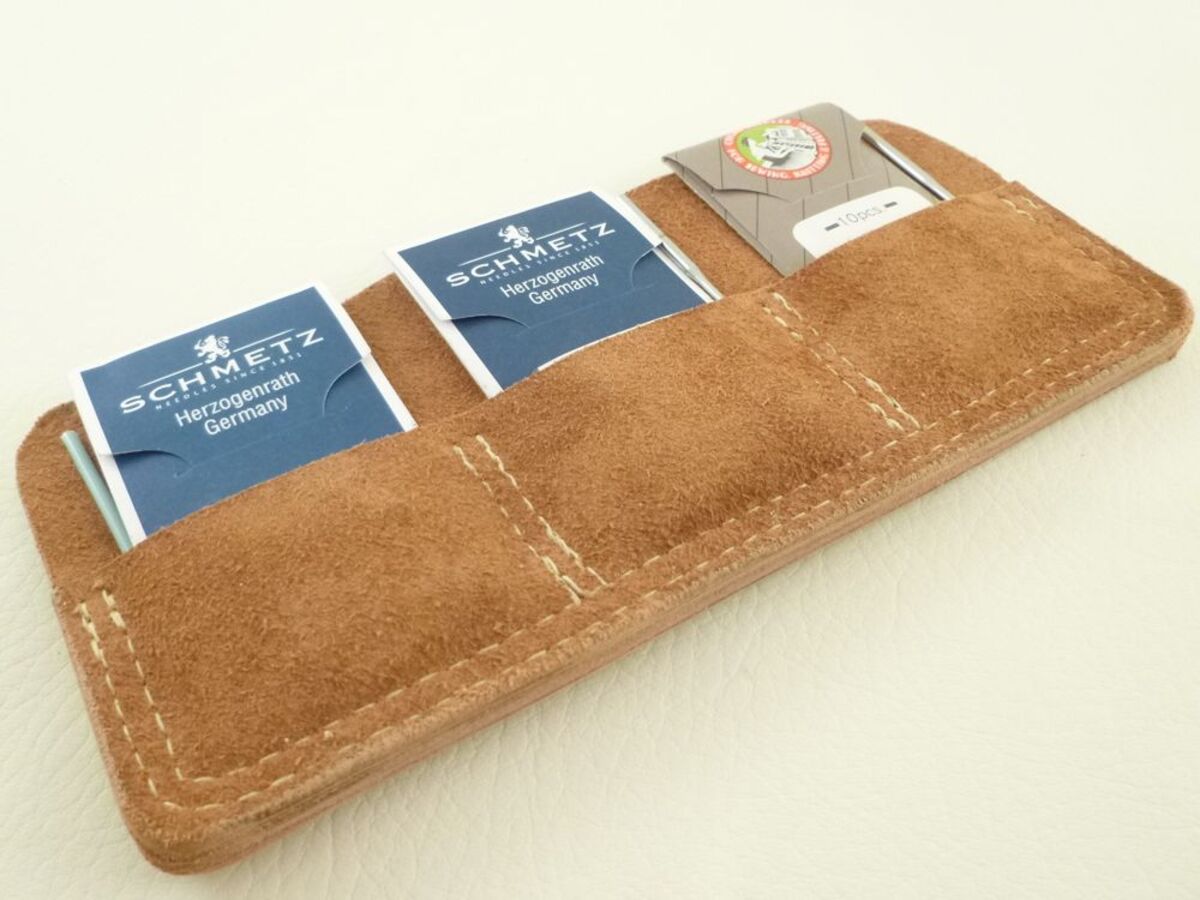
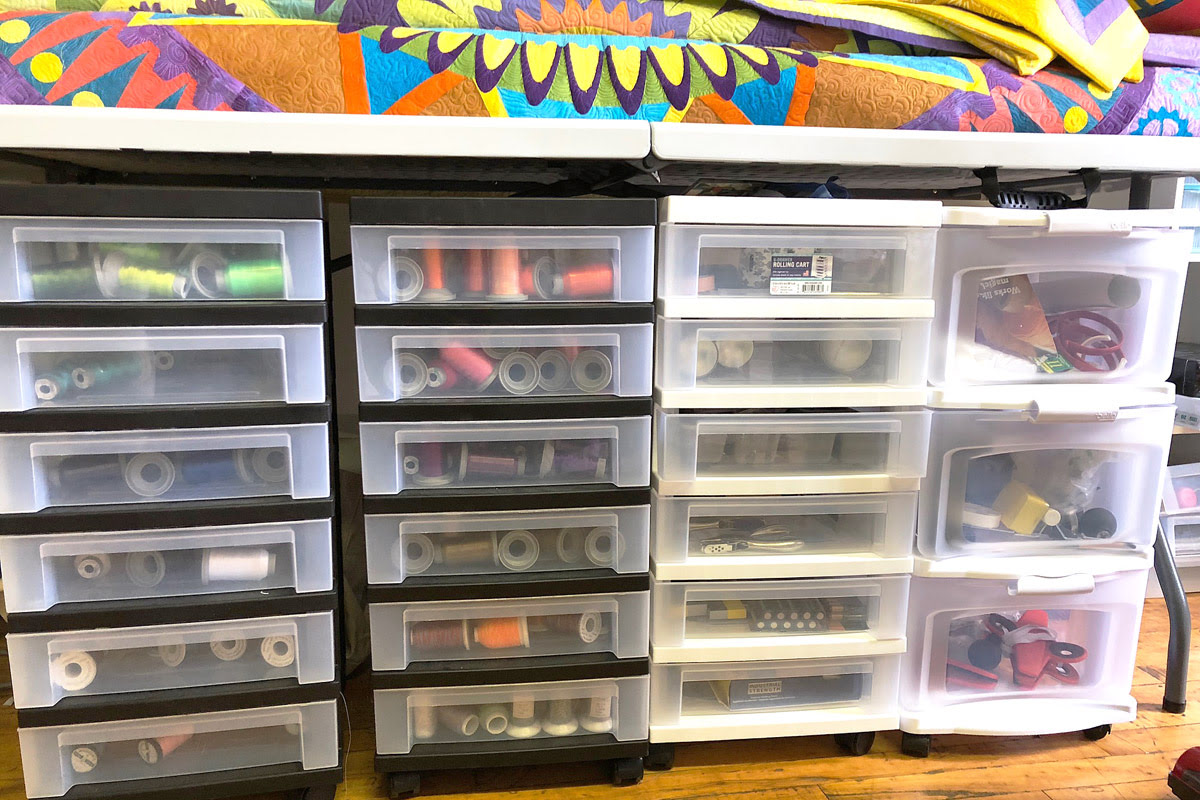
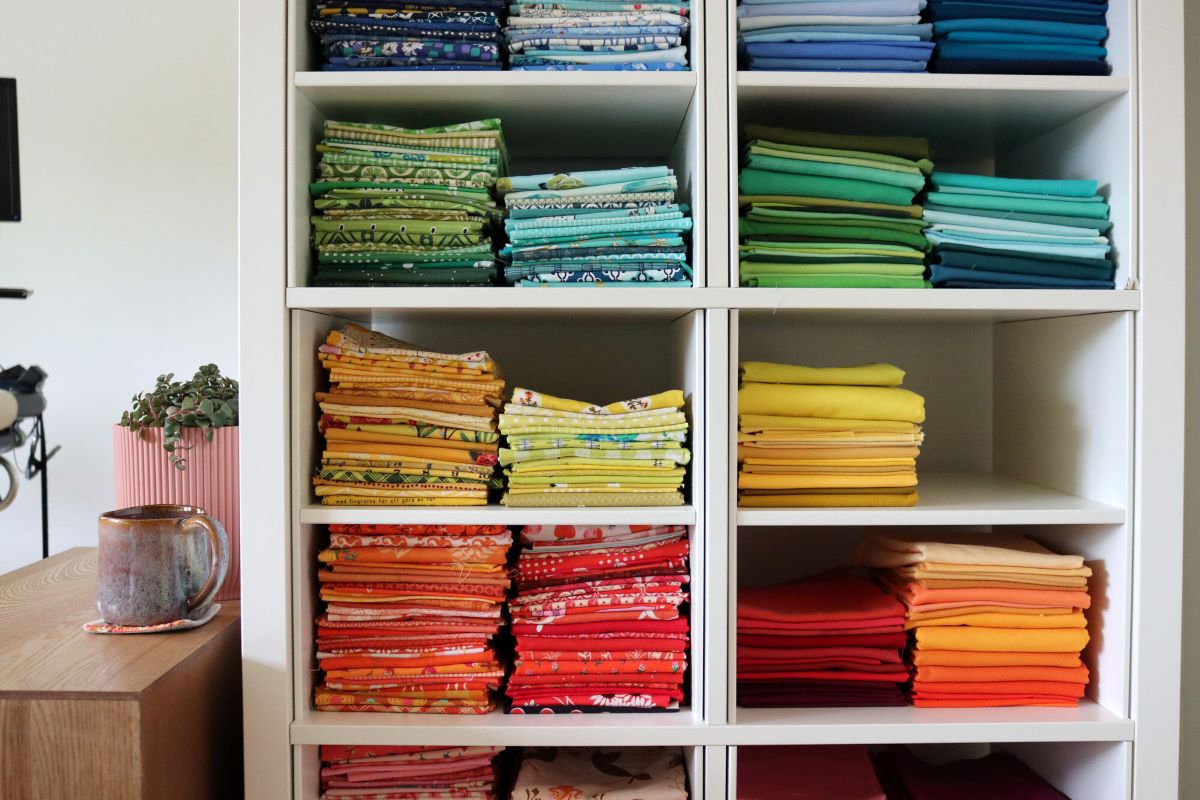
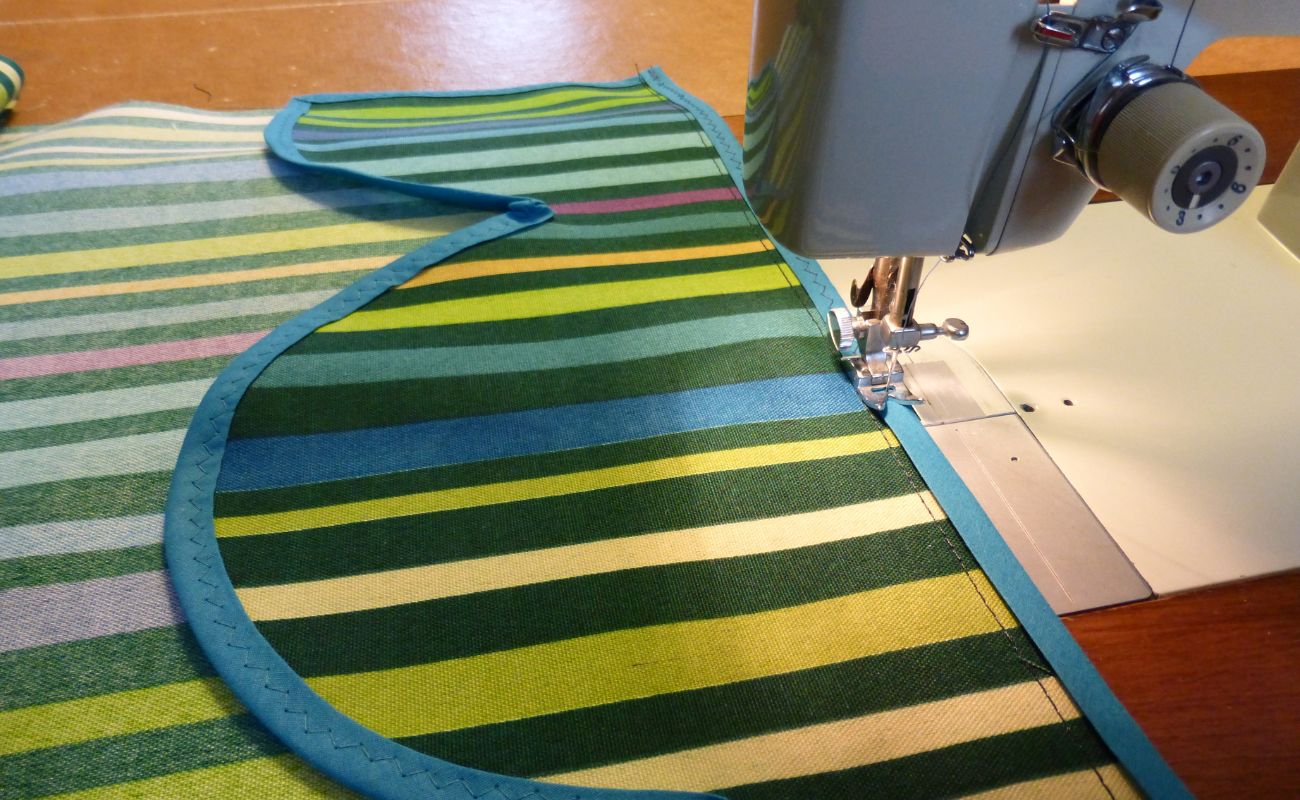

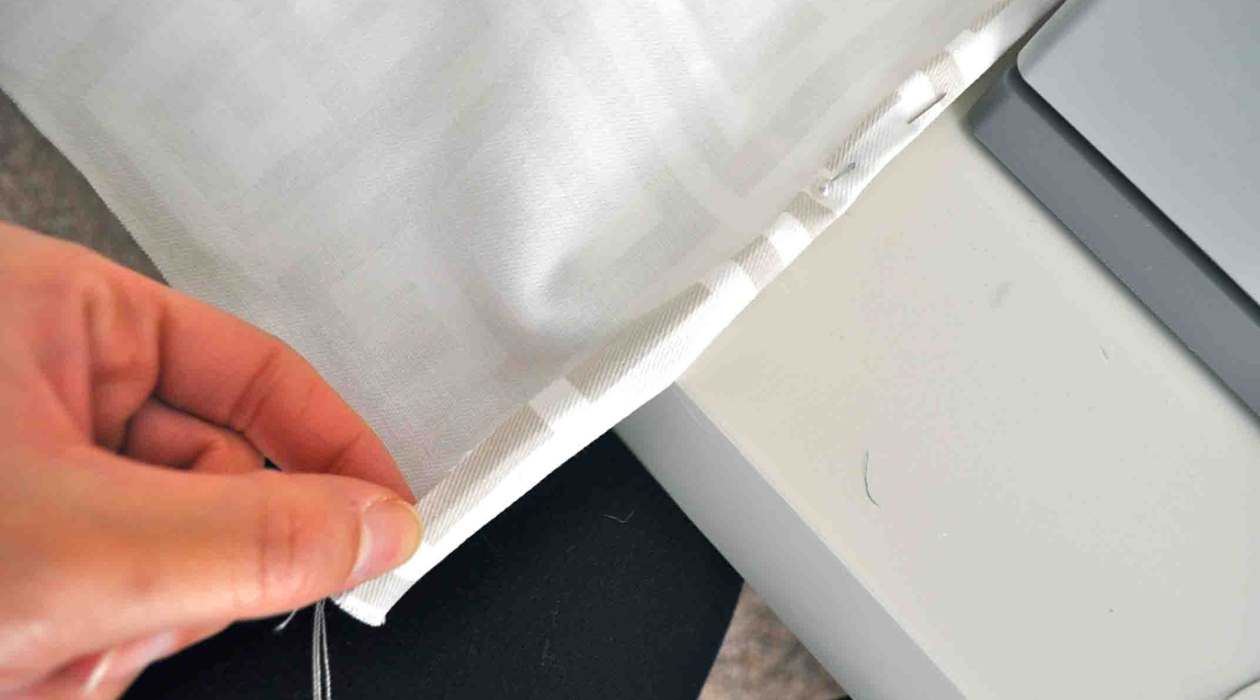
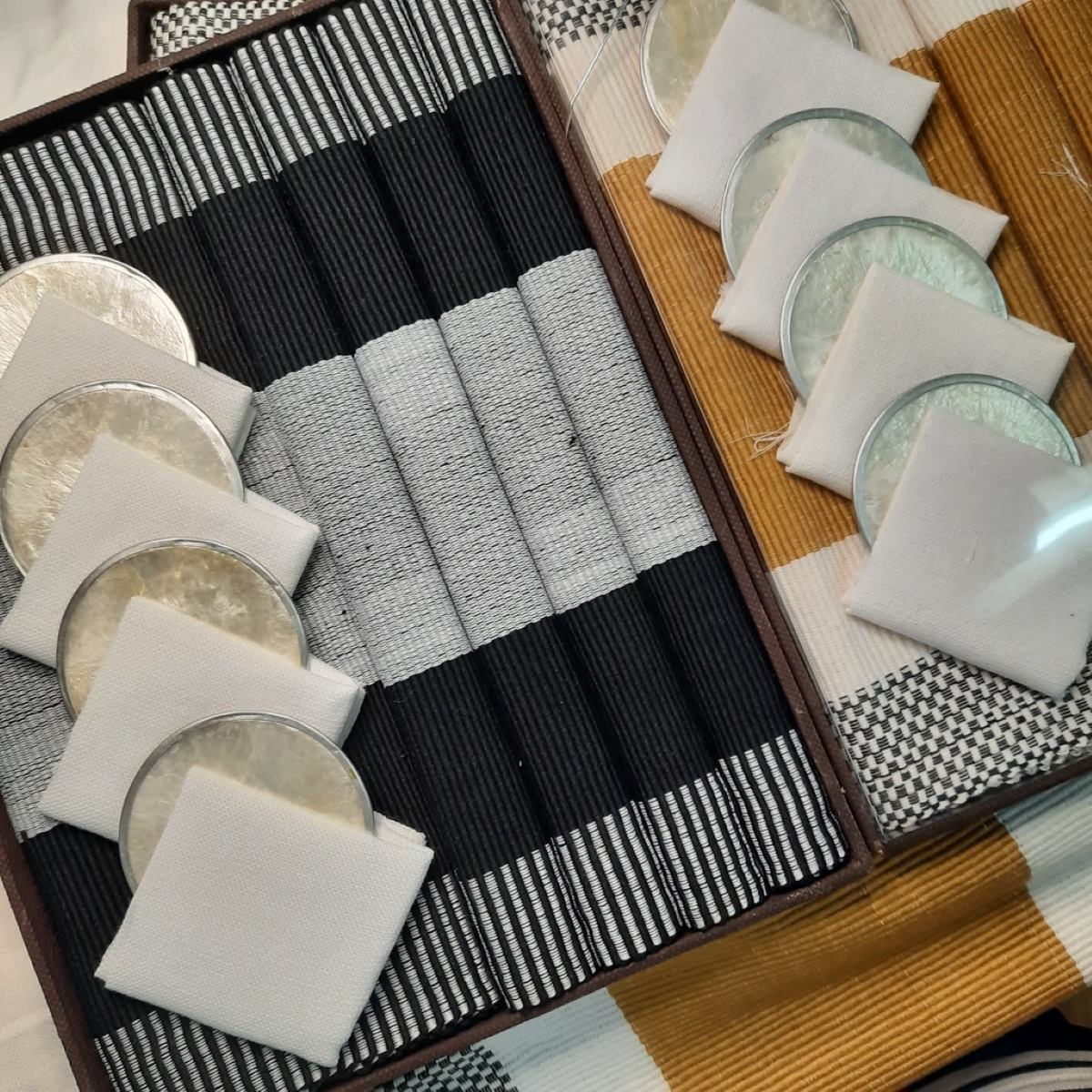

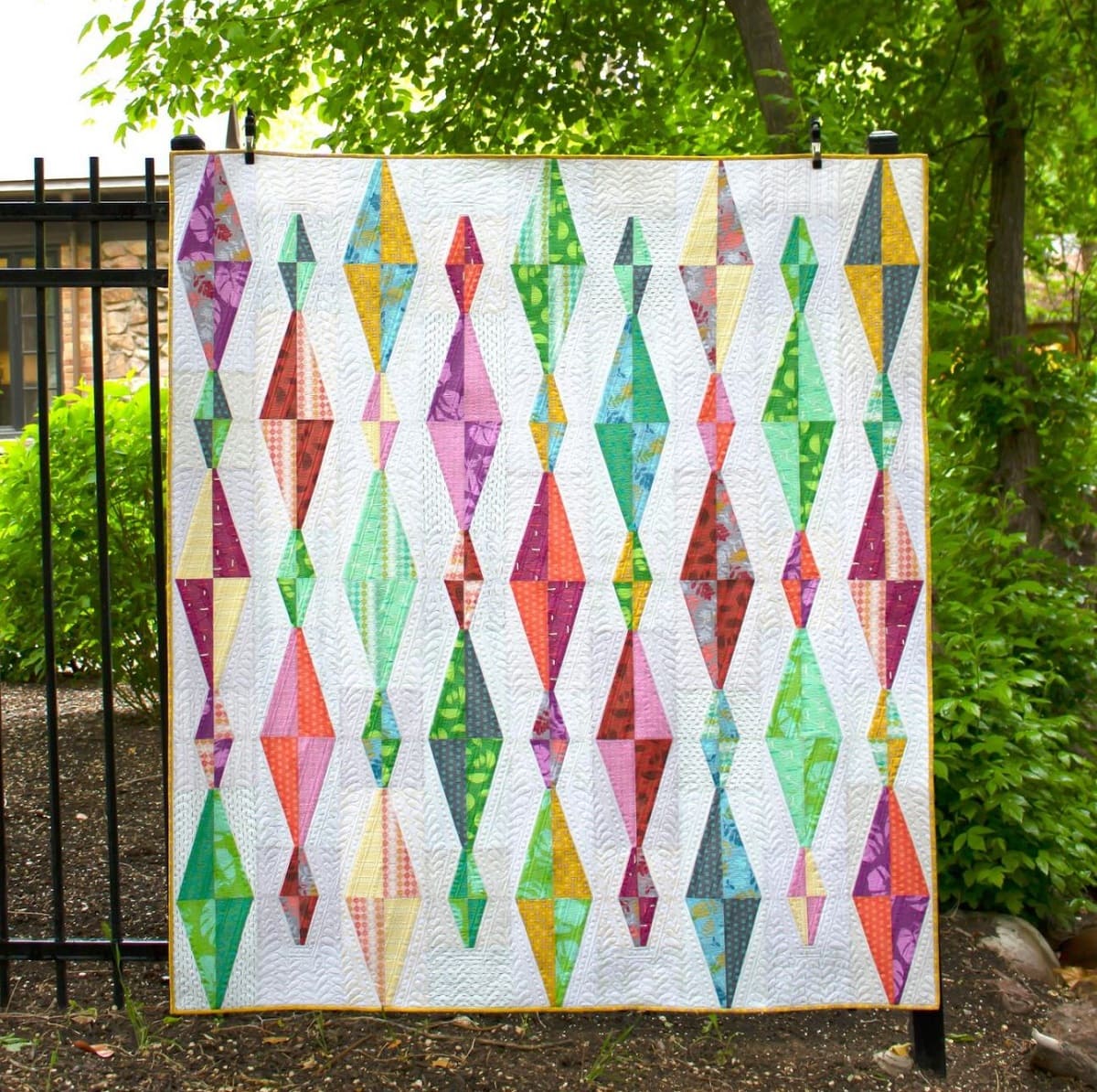
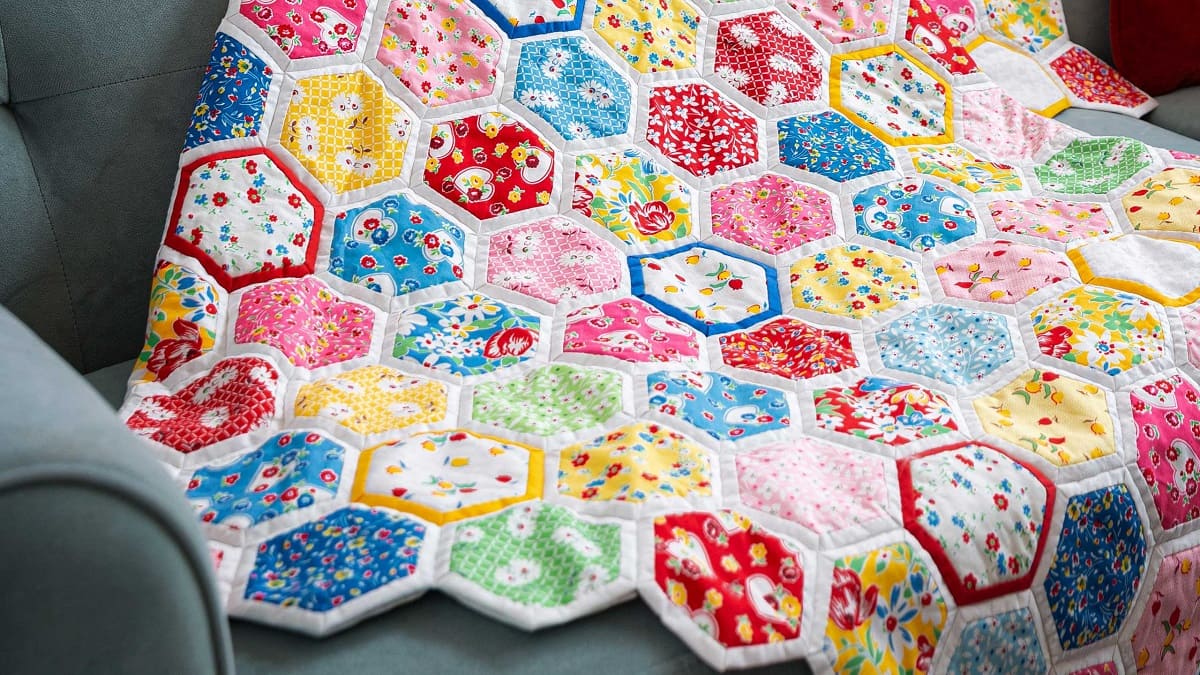
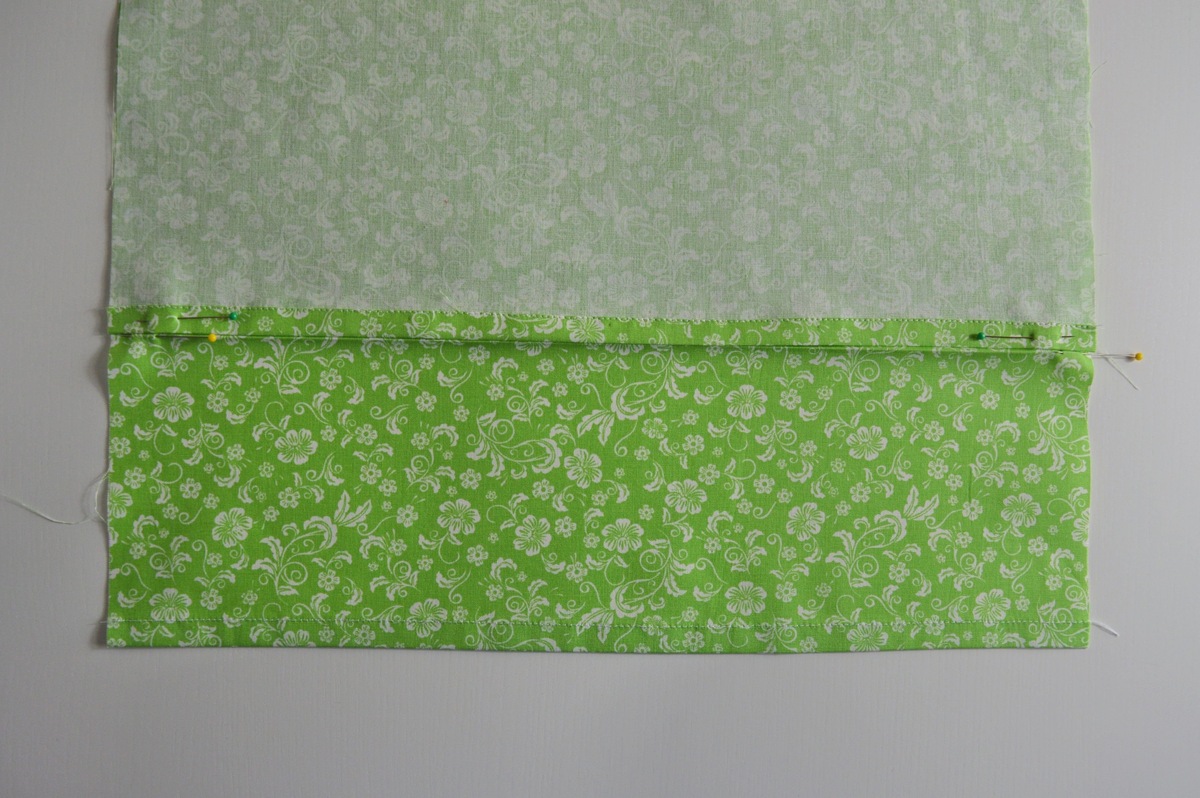
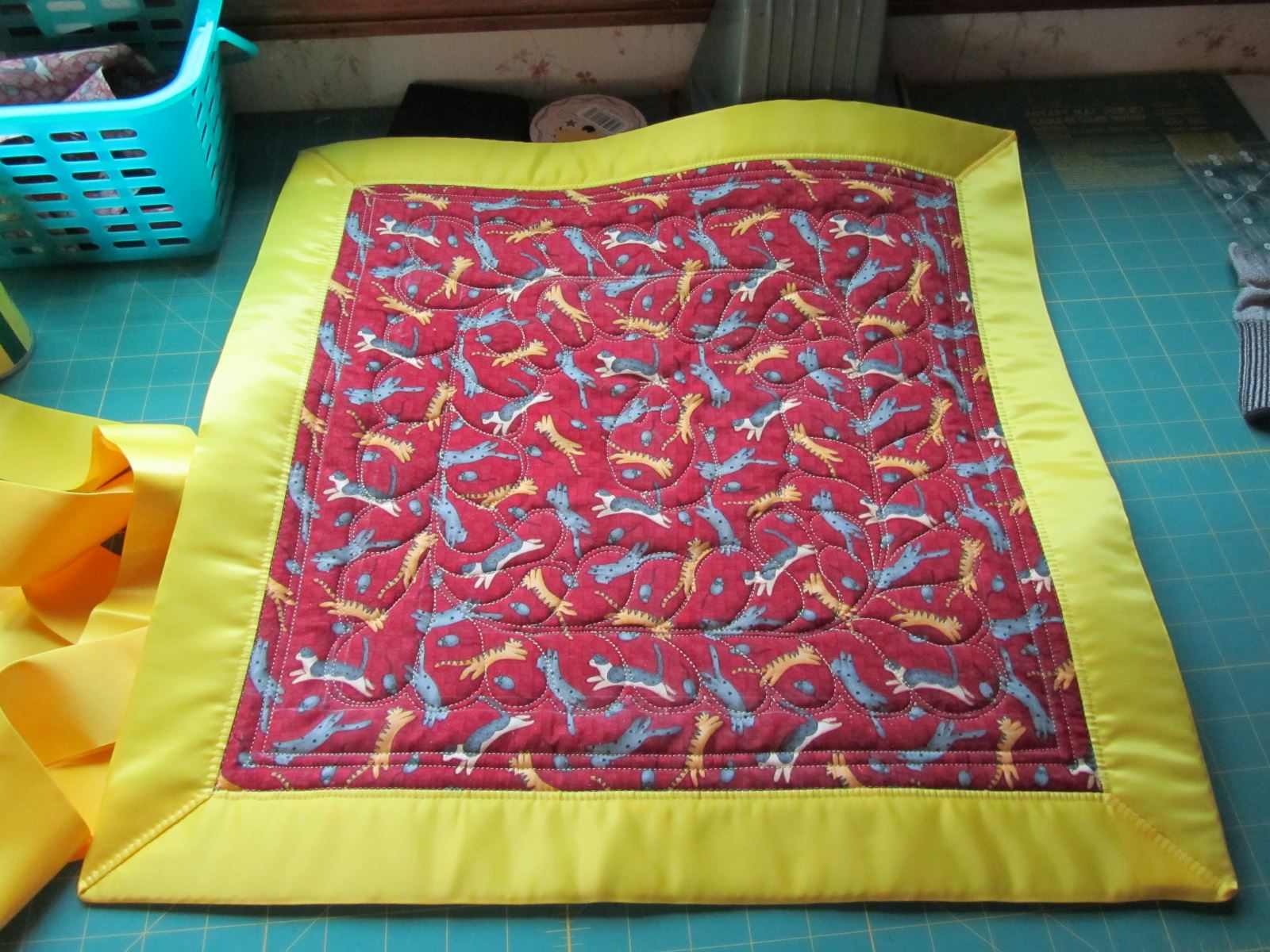
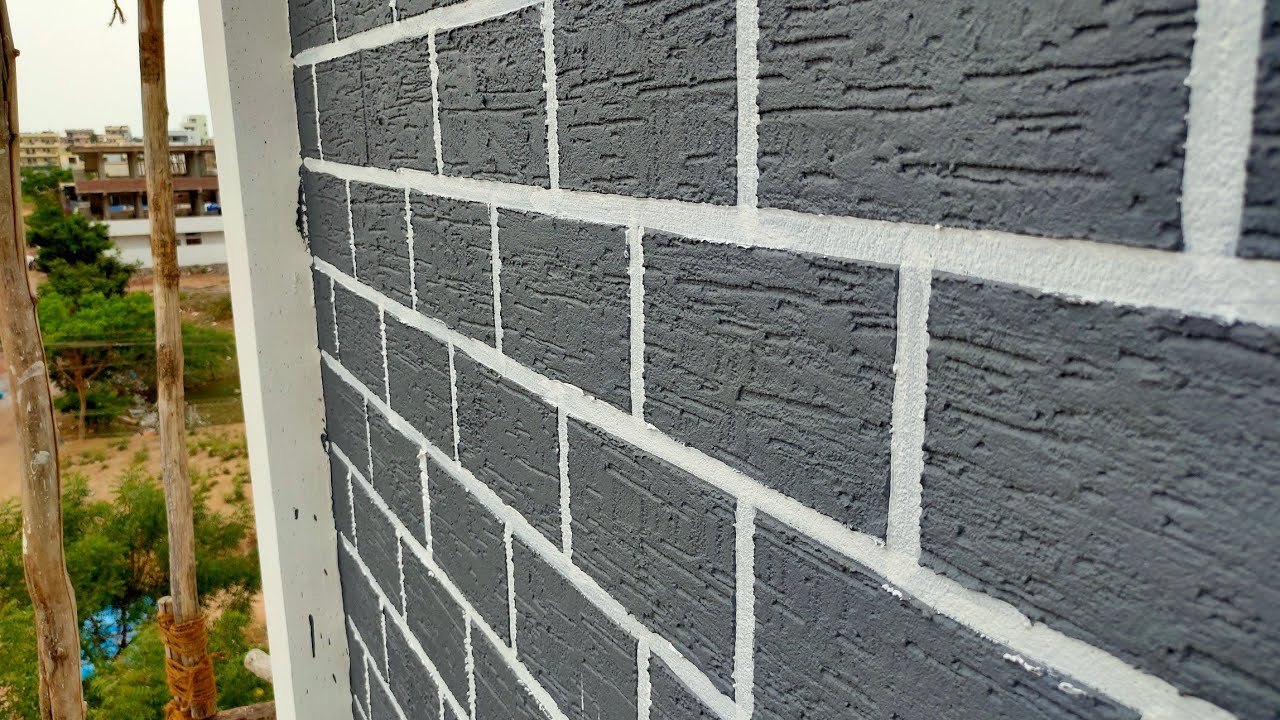

0 thoughts on “How To Store Sewing Patterns”